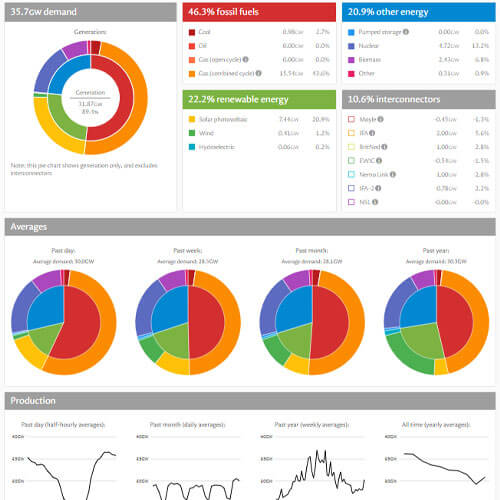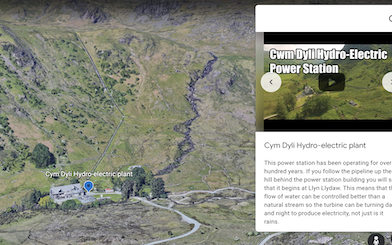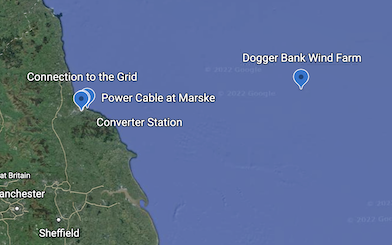Spark Tees Valley
This resource has a number of resources across KS2 although of course they can be used interchangeably as needed. This industry is growing rapidly in the NE and new resources will be added on a regular basis, often in the context of local companies.
Ideas, resources and suggestions
This video is a brilliant resource to base your topic on. The resources below refer to each section of the video (the LEGO video)
Class discussion
Watch up to 1 minute of the video (end of the Christmas lights section):
What is energy?
Why do we need it?
Are there different types?
How do we create it?
HOW IS ELECTRICITY GENERATED?
Watch the LEGO video up to 1m 57 seconds
Demo video of a turbine creating electricity by spinning
Lego Video Timing up to 1m 57sec
Following the explanation in the video there is an opportunity to demonstrate this using mini turbines connected to LEDs.
They can be blown on, spun by hand or even put under a tap. Alternatively, using a hand cranked generator to bring a ‘flat’ electronic device (such as an iPad) back to life also demonstrates the point nicely.
In both cases there needs to be recognition that inside the ‘turbine’ there is basically a coil of copper wire and some magnets.
WHAT ARE FOSSIL FUELS?
Lego Video Timing up to 4m 30sec
Discussion
Find out what children know about coal, oil and gas.
Activity
Opportunity for writing a letter to a local MP/power station company to explain why we need to stop using coal, oil and gas.
How will we run our cars? How will we generate electricity to heat our homes and power our devices? Is there an energy source that won’t run out?
Simple little animation showing how coal is formed
RENEWABLE ENERGY
Lego Video Timing up to 6m 20sec – Wind energy.
Activity – So how big is a Wind Turbine?
Explain about a new wind farm being out to sea from the Tees Valley.
Website to illustrate is here: https://sofiawindfarm.com/about/
Facts and figures are under the ‘About’ tab and video/images under ‘Latest’.
Children have to mark out on the floor in school grounds the ‘height’ of a turbine if it was laid down. Opportunities for measuring with trundle wheels, long tapes to get to 252m. This could also/instead be done on a map of the area if going outside is completely impractical (screenshot a google maps area and add a grid over it representing a clear scale like 1cm = 10m). Some children may also point out that the base has to be up to 35m longer to reach the sea bed.
Renewable Energy Resources



This video explains what the National Grid is
This video shows a water turbine in action
Solar Power
Lego Video Timing up to Up to 7m 45 seconds – Solar Energy
Google Voyage 1 (above) contains two different types of solar park. Limondale in Australia is barely built yet but there are videos embedded at the placemarker to show it in progress. It uses what people usually think of as solar cells that turn sunlight directly into electricity.
Can the children think of solar powered devices that they know about?
Ideally using some solar lights or a solar powered calculator would be useful to demonstrate.
Activity – Design an experiment to see how much light solar powered lights need to work.
Very similar to the traditional ‘grow plants in the dark, in the warm, in the sunlight’ type experiment, place solar lights in a dark cupboard, in the classroom but out of the sun, in a sunny place.
Ensure the lights are fully ‘flat’ before the experiment by having them on all day until flat (cover the cell and sensor so it is in the dark). Then place all of them in their respective positions at exactly the same time making sure they are switched ‘off’ so they don’t use up any power when it gets dark.
Leave for the rest of the day/overnight then reveal the next morning but cover the cell and sensor with something so it thinks it is night, then switch ‘on’.
Record how long each set of lights stays on for during the rest of the day (after covering the solar cell!).
This activity is a brilliant opportunity to introduce a simple graph to show a trend. Use the ‘Number’ help guide on this site to see how easy it is. Are there any other factors that need to be considered?
Resource required: a solar powered light of some kind.
There are also lots of solar cell powered toys and little cars that could be used to do a similar type of test (how far can a car go with different amounts of sunlight having charged it etc), just type ‘solar power car’ into Amazon! There is a video embedded in the Voyage about how Solar Cells work at a very simple level.
The placemarker ‘Andasol 3’ in Google Voyage 1 is focussed on thermal energy.
The Andasol Plant in Spain directs sunlight using mirrors to heat up a tube of liquid (salt infused or oil) which then heats up water to turn a turbine.

Activity: Using small mirrors to direct heat
This is an easy experiment to do, just position a thermometer (ideally out of the direct light) and take a reading.
Ask children to hold small mirrors and direct sunlight at the temperature sensor/bottom of the thermometer. In normal Summer sunshine the temp will rise on the thermometer almost instantly.
Can the children design a mirror array to keep something like a glass of water warmer than one without the array?
Easy to set up with two glasses of water side by side but one with mirrors arranged to direct the sun towards it.
Children can make their own mirrors using foil wrapped smoothly on card although it may not be quite as effective (especially if it is an any way creased). Great data collection and handling activity.
Water Power
Lego Video Timing up to Up to 6m 42sec
Mini turbines can be shown to turn easily under a tap running and will light an LED if connected (see video above)
Activity: Design a structure with a mini turbine and a light embedded in it
They must embed the turbine in the structure so that moving water will turn the turbine (simulated by pouring water over the turbine). This could be a context like a lighthouse at the mouth of a river where the in and out movement of the tide turns the turbine. Waterproof mini turbines can be cheaply bought on various sites such as Amazon. The context of then designing the structure with the turbine exposed to moving water is then the focus. You can use a running tap as the ‘river movement’ once the structure is built with a light embedded.
Alternatively, pupils could design a device that can be fitted into existing places where water is moving to generate electricity (e.g., in a drainpipe).
If resources are an issue, pupils may also/instead draw a side view of a house that shows all the places where such a device could be fitted to maximise power output (sinks, drains etc – not the toilet!!). How could the flow be made more constant? Demonstrate how a storage tank (bottle) could collect the water so it could be released in a more controlled and timed way. The CymDyli Hydro-electric plant on Google Voyage 1 shows this including an explanatory video.




